Abstract
To define the pathophysiologic mechanisms of cold agglutinin disease, we investigated a human model of this syndrome in normal volunteers and in patients with diminished levels of serum complement. Subjects received intravenous injections of autologous, chromated (51Cr) erythrocytes which had been exposed in vitro to purified cold agglutinin preparations and to fresh autologous serum (as a source of complement). In vitro tests confirmed that such cells were coated with activated complement components (C3b), but not with immunoglobulin. Studies of erythrocyte clearance and simultaneous organ scanning showed that erythrocytes sensitized with low levels of cold agglutinin primarily undergo reticuloendothelial sequestration by the liver rather than intravascular hemolysis. After the initial sequestration of C3b-coated erythrocytes, a fraction of the cells are released back into the circulation and survive normally thereafter. Both phenomena are dose dependent and closely follow the sequestration and release pattern observed with IgM isoagglutinin sensitization. Experiments that used heated autologous serum as a source of B3 inactivator demonstrated that functionally intact C3b is required for hepatic sequestration. Erythrocytes coated with C3d were not cleared from the circulation. In vitro assays that sued human macrophage monolayers suggested that the intrahepatic conversion of C3b to C3d is responsible for the release of sensitized erythrocytes back into the circulation. The clearance of cold agglutinin-sensititzed erythrocytes was compared to the clearance mediated by IgM isoagglutinin. We found that the rate of complement fixation by an IgM antibody proceeds rapidly in vivo that the time for complement activation is not a factor in limiting the rate of hepatic sequestration. The major limiting factor appears to be the rate of liver blood flow. Maximal in vitro coating of erythrocytes with C3d conferred protection from further cold agglutinin sensitization but not from IgM isoagglutinin-mediated clearance. This suggests a mechanism for the resistance to lysis observed in cells obtained from patients with the cold agglutinin syndrome and confirms the marked dependence of the site of C3 attachment on the site of membrane localization of the sensitizing antibody.
Full text
PDF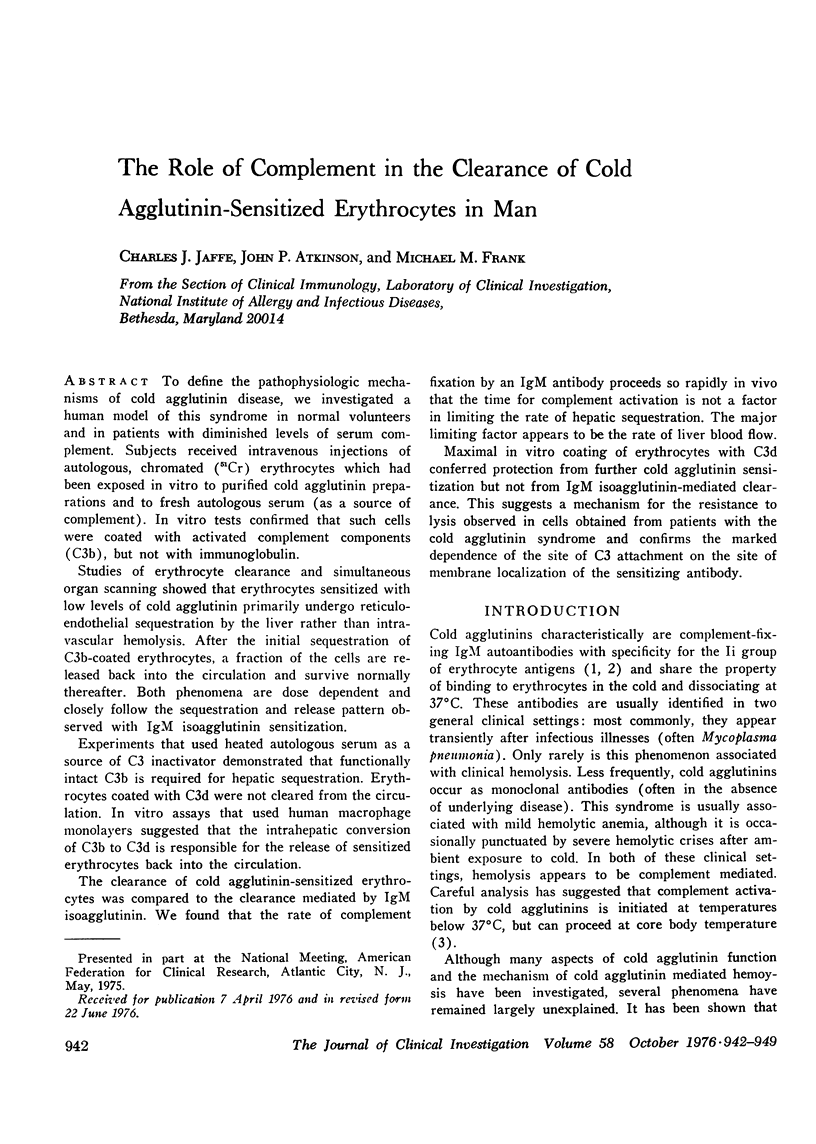
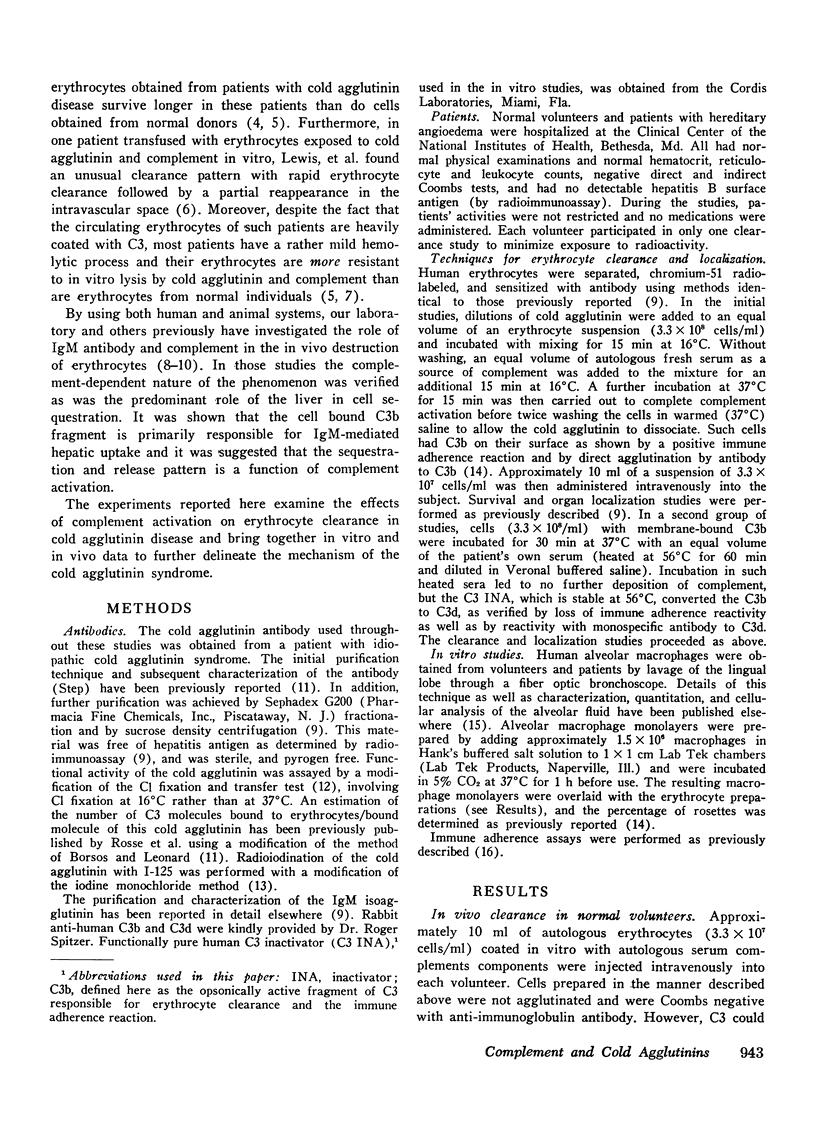
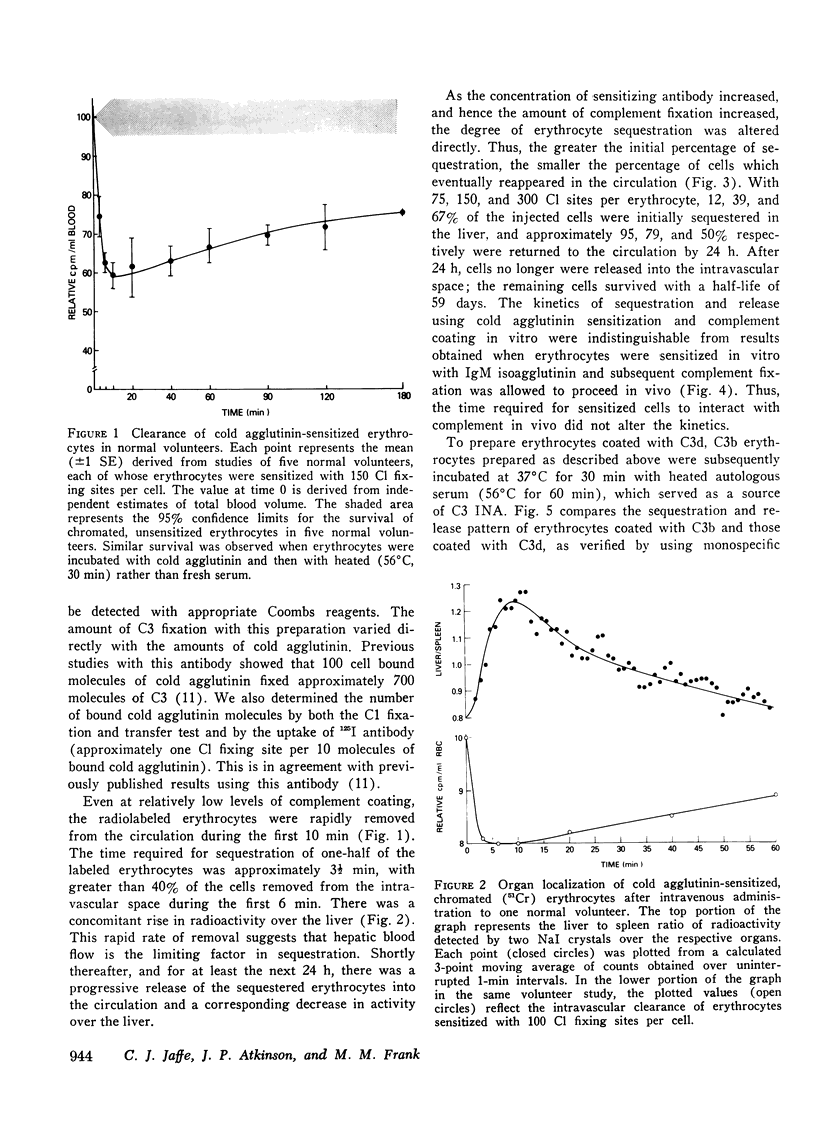
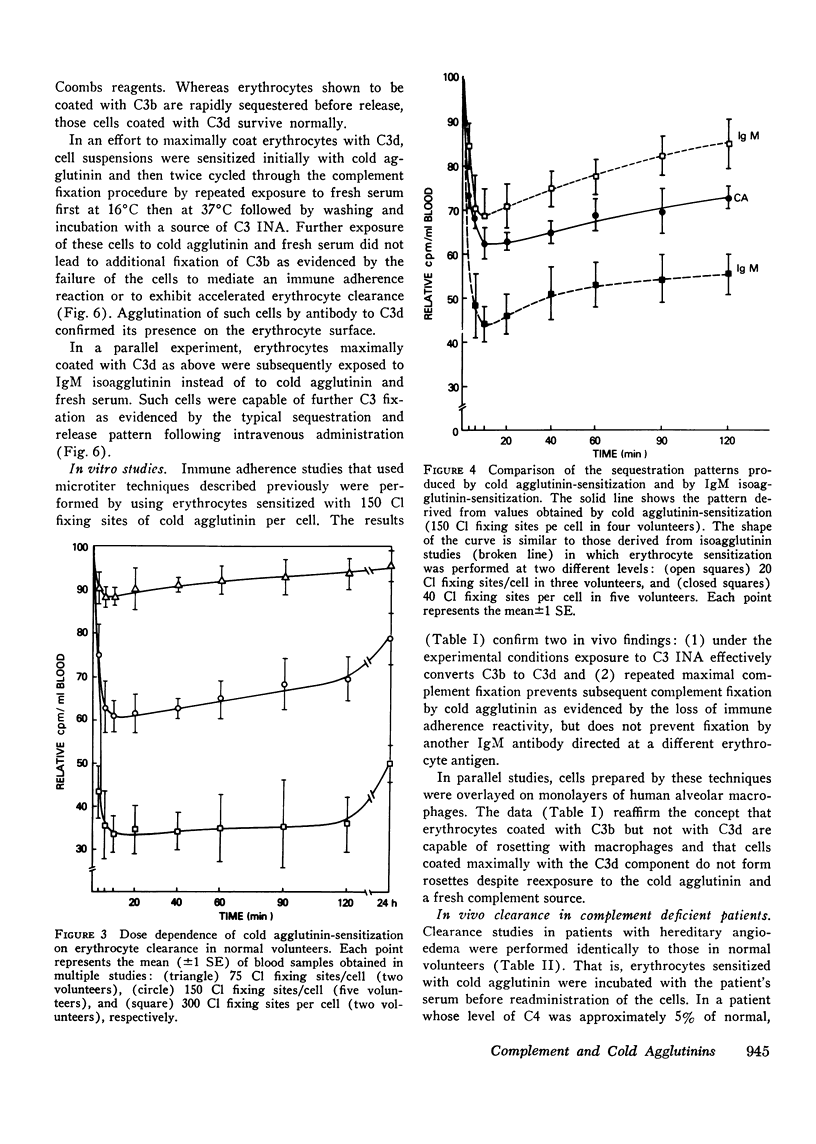
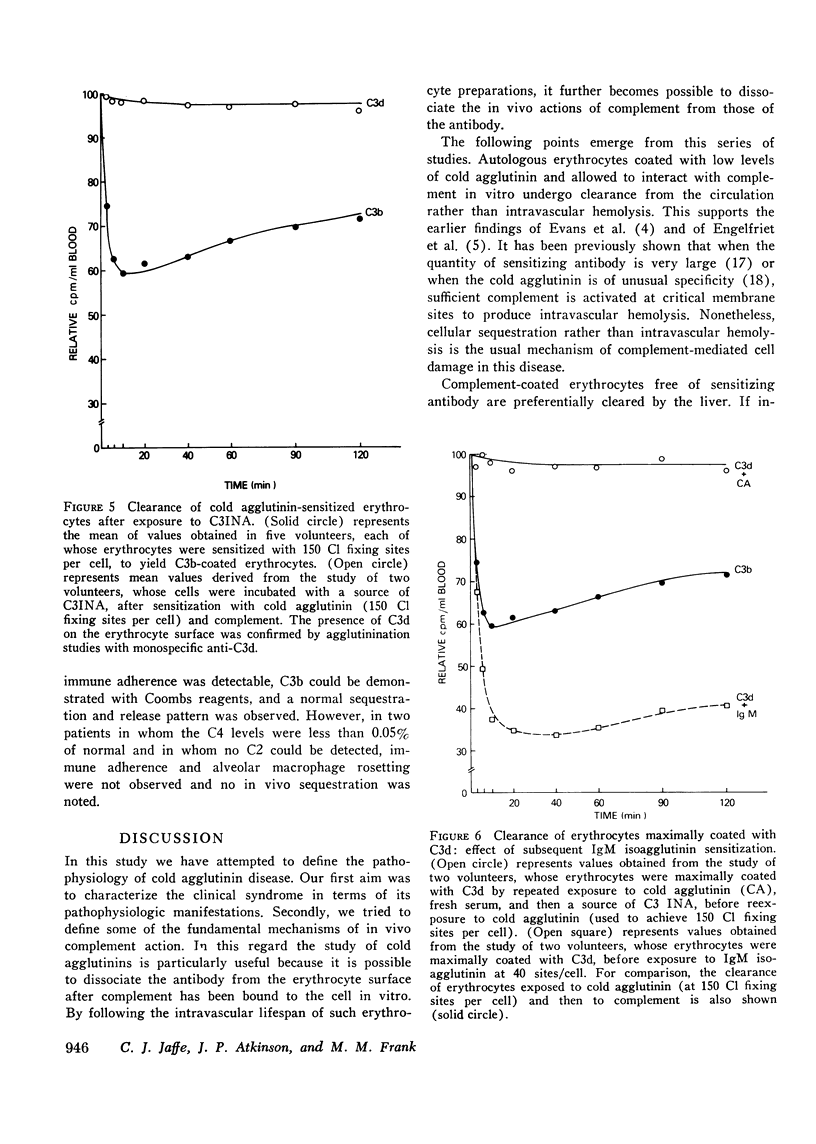
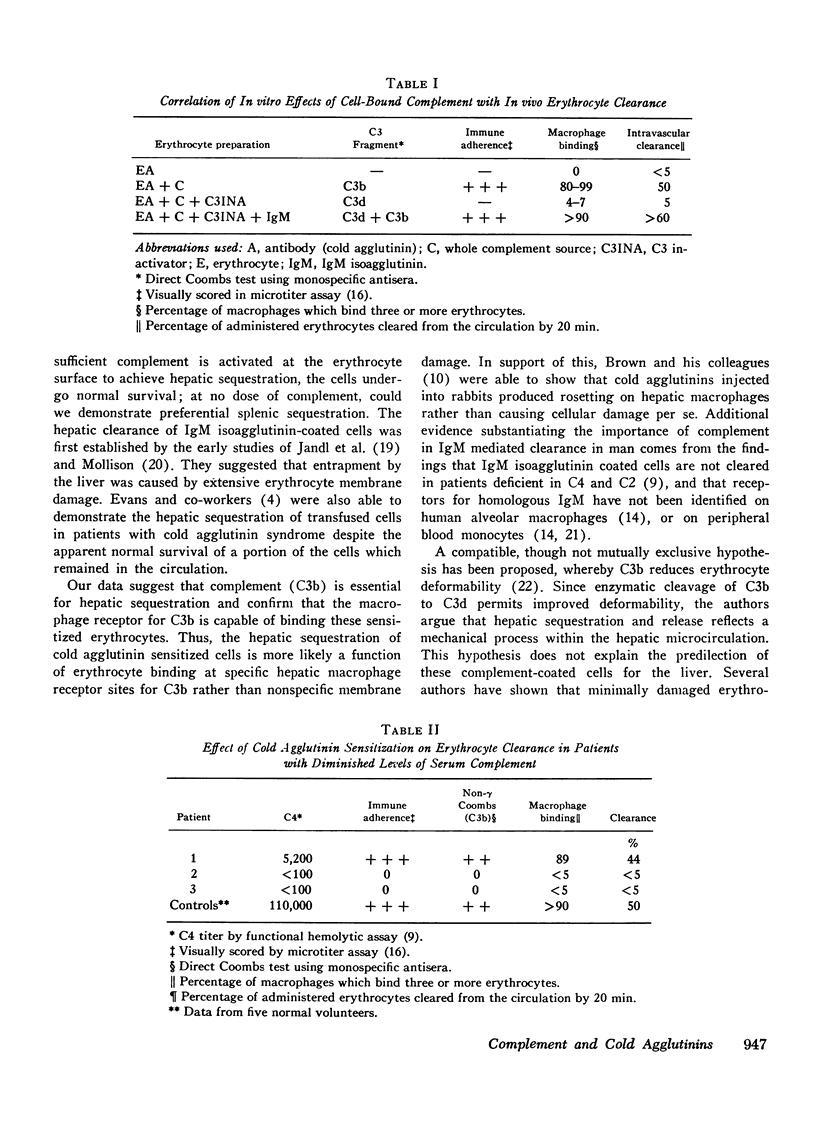
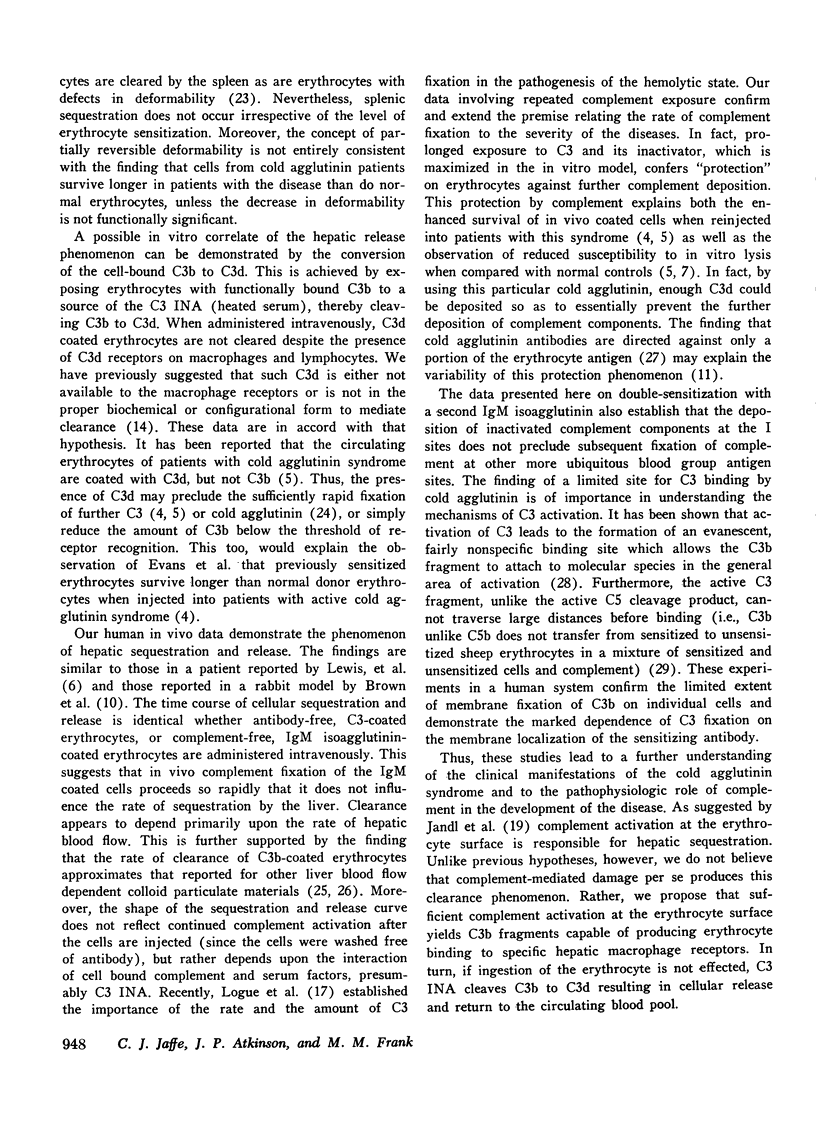
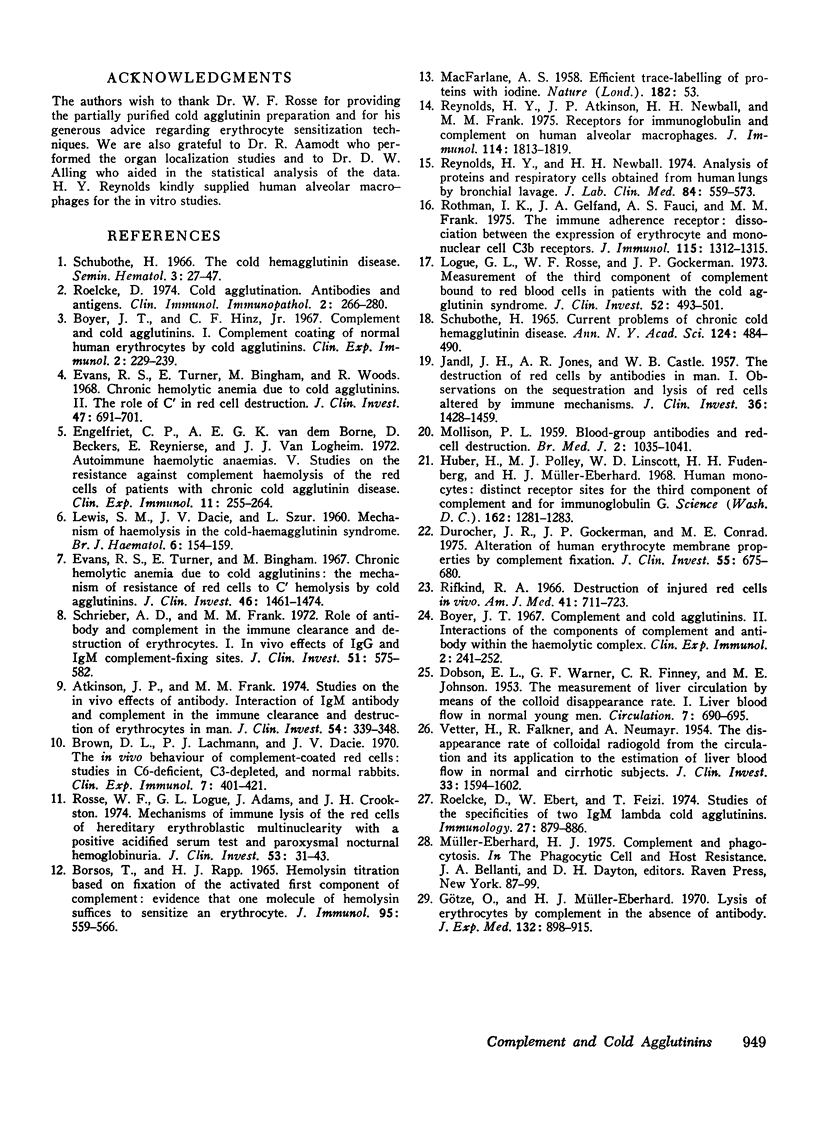
Selected References
These references are in PubMed. This may not be the complete list of references from this article.
- Atkinson J. P., Frank M. M. Studies on the in vivo effects of antibody. Interaction of IgM antibody and complement in the immune clearance and destruction of erythrocytes in man. J Clin Invest. 1974 Aug;54(2):339–348. doi: 10.1172/JCI107769. [DOI] [PMC free article] [PubMed] [Google Scholar]
- Borsos T., Rapp H. J. Hemolysin titration based on fixation of the activated first component of complement: evidence that one molecule of hemolysin suffices to sensitize an erythrocyte. J Immunol. 1965 Sep;95(3):559–566. [PubMed] [Google Scholar]
- Boyer J. T. Complement and cold agglutinins. II. Interactions of the components of complement and antibody within the haemolytic complex. Clin Exp Immunol. 1967 Mar;2(2):241–252. [PMC free article] [PubMed] [Google Scholar]
- Boyer J. T., Hinz C. F., Jr Complement and cold agglutinins. I. Complement coating of normal human erythrocytes by cold agglutinins. Clin Exp Immunol. 1967 Mar;2(2):229–239. [PMC free article] [PubMed] [Google Scholar]
- Brown D. L., Lachmann P. J., Dacie J. V. The in vivo behaviour of complement-coated red cells: studies in C6-deficient, C3-depleted and normal rabbits. Clin Exp Immunol. 1970 Sep;7(3):401–421. [PMC free article] [PubMed] [Google Scholar]
- DOBSON E. L., WARNER G. F., FINNEY C. R., JOHNSTON M. E. The measurement of liver circulation by means of the colloid disappearance rate. I. Liver blood flow in normal young men. Circulation. 1953 May;7(5):690–695. doi: 10.1161/01.cir.7.5.690. [DOI] [PubMed] [Google Scholar]
- Durocher J. R., Gockerman J. P., Conrad M. E. Alteration of human erythrocyte membrane properties by complement fixation. J Clin Invest. 1975 Apr;55(4):675–680. doi: 10.1172/JCI107976. [DOI] [PMC free article] [PubMed] [Google Scholar]
- Engelfriet C. P., Von dem Borne A. E., Beckers D., Reynierse E., Van Loghem J. J. Autoimmune haemolytic anaemias. V. studies on the resistance against complement haemolysis of the red cells of patients with chronic cold agglutinin disease. Clin Exp Immunol. 1972 Jun;11(2):255–264. [PMC free article] [PubMed] [Google Scholar]
- Evans R. S., Turner E., Bingham M. Chronic hemolytic anemia due to cold agglutinins: the mechanism of resistance of red cells to C' hemolysis by cold agglutinins. J Clin Invest. 1967 Sep;46(9):1461–1474. doi: 10.1172/JCI105638. [DOI] [PMC free article] [PubMed] [Google Scholar]
- Evans R. S., Turner E., Bingham M., Woods R. Chronic hemolytic anemia due to cold agglutinins. II. The role of C' in red cell destruction. J Clin Invest. 1968 Apr;47(4):691–701. doi: 10.1172/JCI105764. [DOI] [PMC free article] [PubMed] [Google Scholar]
- Götze O., Müller-Eberhard H. J. Lysis of erythrocytes by complement in the absence of antibody. J Exp Med. 1970 Nov;132(5):898–915. doi: 10.1084/jem.132.5.898. [DOI] [PMC free article] [PubMed] [Google Scholar]
- Huber H., Polley M. J., Linscott W. D., Fudenberg H. H., Müller-Eberhard H. J. Human monocytes: distinct receptor sites for the third component of complement and for immunoglobulin G. Science. 1968 Dec 13;162(3859):1281–1283. doi: 10.1126/science.162.3859.1281. [DOI] [PubMed] [Google Scholar]
- JANDL J. H., JONES A. R., CASTLE W. B. The destruction of red cells by antibodies in man. I. Observations of the sequestration and lysis of red cells altered by immune mechanisms. J Clin Invest. 1957 Oct;36(10):1428–1459. doi: 10.1172/JCI103542. [DOI] [PMC free article] [PubMed] [Google Scholar]
- Logue G. L., Rosse W. F., Gockerman J. P. Measurement of the third component of complement bound to red blood cells in patients with the cold agglutinin syndrome. J Clin Invest. 1973 Feb;52(2):493–501. doi: 10.1172/JCI107206. [DOI] [PMC free article] [PubMed] [Google Scholar]
- MOLLISON P. L. Blood-group antibodies and red-cell destruction. Br Med J. 1959 Nov 21;2(5159):1035–1041. doi: 10.1136/bmj.2.5159.1035. [DOI] [PMC free article] [PubMed] [Google Scholar]
- Reynolds H. Y., Atkinson J. P., Newball H. H., Frank M. M. Receptors for immunoglobulin and complement on human alveolar macrophages. J Immunol. 1975 Jun;114(6):1813–1819. [PubMed] [Google Scholar]
- Reynolds H. Y., Newball H. H. Analysis of proteins and respiratory cells obtained from human lungs by bronchial lavage. J Lab Clin Med. 1974 Oct;84(4):559–573. [PubMed] [Google Scholar]
- Rifkind R. A. Destruction of injured red cells in vivo. Am J Med. 1966 Nov;41(5):711–723. doi: 10.1016/0002-9343(66)90032-5. [DOI] [PubMed] [Google Scholar]
- Roelcke D. Cold agglutination. Antibodies and antigens. Clin Immunol Immunopathol. 1974 Jan;2(2):266–280. doi: 10.1016/0090-1229(74)90044-0. [DOI] [PubMed] [Google Scholar]
- Roelcke D., Ebert W., Feizi T. Studies on the specificities of two IgM lambda cold agglutinins. Immunology. 1974 Nov;27(5):879–886. [PMC free article] [PubMed] [Google Scholar]
- Rothman I. K., Gelfand J. A., Fauci A. S., Frank M. M. The immune adherence receptor: dissociation between the expression of erythrocyte and mononuclear cell C3b receptors. J Immunol. 1975 Nov;115(5):1312–1315. [PubMed] [Google Scholar]
- Schreiber A. D., Frank M. M. Role of antibody and complement in the immune clearance and destruction of erythrocytes. I. In vivo effects of IgG and IgM complement-fixing sites. J Clin Invest. 1972 Mar;51(3):575–582. doi: 10.1172/JCI106846. [DOI] [PMC free article] [PubMed] [Google Scholar]
- Schubothe H. Current problems of chronic cold hemagglutinin disease. Ann N Y Acad Sci. 1965 Jun 30;124(2):484–490. doi: 10.1111/j.1749-6632.1965.tb18982.x. [DOI] [PubMed] [Google Scholar]
- VETTER H., FALKNER R., NEUMAYR A. The disappearance rate of colloidal radio-gold from the circulation and its application to the estimation, of liver blood flow in normal and cirrhotic subjects. J Clin Invest. 1954 Dec;33(12):1594–1602. doi: 10.1172/JCI103039. [DOI] [PMC free article] [PubMed] [Google Scholar]


